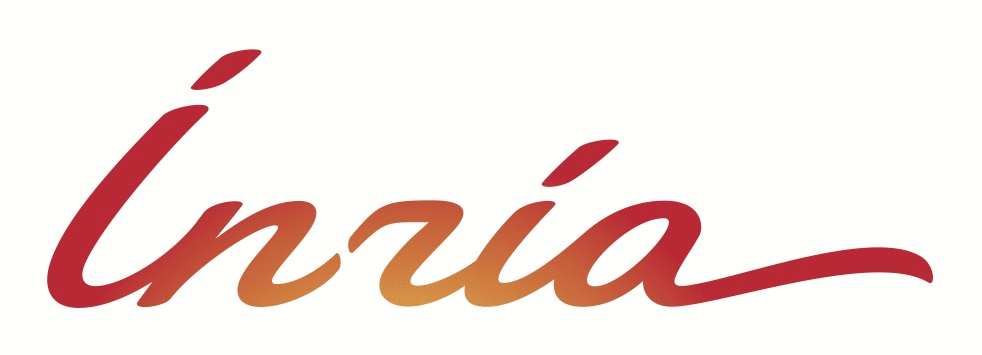Accomodation and transportation
Accomodation and transportation information are available on the Registration page.
Location
The 2011 and first edition of the IWPCM will be held in Lyon, on the campus of La Doua, on May, 2nd 2012. The Lyon metropolitan area, the largest in the Rhône-Alpes region, lies in a strategic location in the natural plain of the Rhone Valley. It is surrounded by the Beaujolais country in the north, the Monts du Lyonnais in the west, and the plains of the Dombes and Isère in the east and north.

Lyon has a long cultural influence on France and the world. The city is known for its historical and architectural landmarks and is a UNESCO World Heritage Site. Lyon was historically known as an important area for the production and weaving of silk and in modern times has developed a reputation as the capital of gastronomy in France. It has a significant role in the history of cinema due to Auguste and Louis Lumière.
The site is situated at about 1h from the Saint-Exupéry Airport, with direct access to the city center.
The city
Strolling about the different quarters of the city, you find yourself transported into any number of historical eras. The most ancient vestige of Roman urbanization and evidence of Lyon's power in the Gallo-Roman period is Fourvière Hill, with its Roman theater, the Temple of Cybele and the Odeum. Lyon is, in fact, the only city in France with a permanent archeological dig. A symbol of Lyon's devotion in the 19th century: the Basilica of Fourvière. Going from what Michelet called the "praying hill" to the "working hill" of the Croix-Rousse, we leap into the history of 19th century labor. Here we find high-ceilinged buildings adapted to the weaving looms of the Canuts silk workers.
During the same period, the city spread to the other side of the Rhone and built up the left bank area with its sumptuous Haussmanian buildings. Development continued incessantly to the east, especially with the coming of industry, which has left scars to this day (vast empty lots in the 7th and 8th districts) but which also spawned interesting worker neighborhoods (quarters such as Mermoz and the Etats-Unis by Tony Garnier, the Cité Jardin in Gerland). Crossing the other river, the Saône, we come to the prestigious Renaissance legacy whose Florentine inspiration and colors dominate Vieux-Lyon (Saint Jean, Saint Georges and Saint Paul quarters). Between the two rivers, the Presqu'île peninsula is a concentration of all periods, from the vestiges of the very religious Middle Ages (Saint Martin d'Ainay Abbey, Saint Nizier Church) to the typically 19th century avenues (now known as Rue de la République and Rue Edouard Herriot), and by way of a few Renaissance streets and the monumental constructions of the classical era (Hôtel Dieu, City Hall, Museum of fine Arts ), Not forgetting, of course, the new contemporary monuments which symbolize Lyon's development.
The physiognomy of the various quarters continues to evolve as the architectural history of Lyon moves into the 21st century: Jean Nouvel and Yann Kersalé designed an audacious renovation of the Opera House; Renzo Piano built a Cité Internationale of warm red brick between the cool blue of the Rhone and the bright green of the Tête d'Or Park; out of Santiago Calatrava's imagination came a railway station in the form of a butterfly at Lyon Saint-Exupéry airport, while the new Lycée international by Jourda and Perraudin winds through Gerland, like a giant glass snake.
Silk industry
Lyon was, first of all, a thriving annual marketplace for precious silks imported from Italy. Louis XI decided in the 15th century to establish in Lyon a manufacture of "gold and silk fabrics". The enterprise proved a failure. Under François I, a new attempt was made and the silk industry was successfully launched. By royal order, financial incentives were granted to silk workers who came to Lyon. A large community of Italian weavers took advantage of the offer. And so was born the "Fabrique": this term encompasses all the various activities involved in silk-making in Lyon and the region. It formed the basis of industrial capitalism in Lyon and the rise of a strong worker culture (the Canuts). In the 18th century, the Lyon silk industry was booming thanks to its unrivalled creativity. Manufacturing and trading developed in parallel.
Block printing, the final stage in the long chain of silk-making professions, was also known as printing "à la lyonnaise". Lyon's production spread abroad. Philippe de Lassalle used a draw loom for the decoration of Versailles Palace. In 1805, Jacquard invented the mechanical loom bearing his name. The perforated card for weaving machines soon followed. By 1870, hand looms had been replaced by mechanical ones. Little by little, the small family workshops of the Croix-Rousse disappeared, and the Canuts with them. From this glorious past, Lyon has preserved the art and technique of weaving. This historical know-how has been applied to the mastery of new materials (composite textiles and technical fabric). Lyon is also the world's leading center of textile design.
Guignol
Guignol is the main character in a puppet theater created at the turn of the century by Laurent Mourguet, a Canut silk worker turned dentist. Guignol, now the symbol of Lyon humor, is a poor silk worker, often accompanied by his grouchy wife, Madelon, and the neighborhood drunk, Gnafron. They are frequently in trouble with the police. They are working class and irreverent and, like the people of Lyon, modest and hard-working. Guignol enjoyed huge success with the working classes in the 1830's. These days, the Lyon bourgeoisie lays claim to this character and the show is now given mostly for children. In any case, the young and old alike can still enjoy his antics at the theater in rue Louis-Carrand.
The Gallo-roman capital
Though the first traces of human presence date back to the iron age, the founding of Lyon was given by Roman legate on October 9th, in the year 43 B.C. In keeping with imperial design, the city quickly assumed the position of political, economic, military and religious capital of the three Gauls.
At the meeting point of the Saône and Rhone rivers, Lugdunum, as Lyon was then known, developed first on Fourvière Hill, where a forum, theater, temple of Cybele, Odeum and public baths were erected. Its territory extended to Croix-Rousse Hill (amphitheater) and down to the Presqu'ile, home to residential buildings, shops and workshops. The city was located at the intersection of great Roman roads and its water supply arrived via four aqueducts, ruins of which can still be seen in the region. As the birthplace of Christianity in Gaul, Lyon witnessed its first martyrs in the year 177 with the torture of Saint Blandine. The persecutions of 177 marked the start of Lugdunum's decline. The Capital of the Gauls was a city of the arts. The ceramicists, bronze makers, and glass makers of Lyon were renowned throughout the empire. 20 years later the city was ravaged by fire, in punishment for its ill-chosen alliance in a power struggle between two Roman generals. At the end of the 3rd century, the decline of the Roman Empire exposed Lugdunum to the violent invasions of the Barbarians who chased out the inhabitants of the upper city.
Nowadays, you can find vestiges of the old roman city on the Fourvière hill, with ruins of amphiteaters right in the middle of the city.








